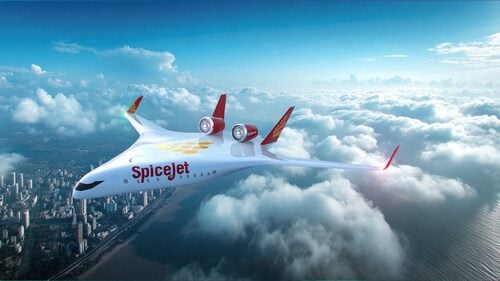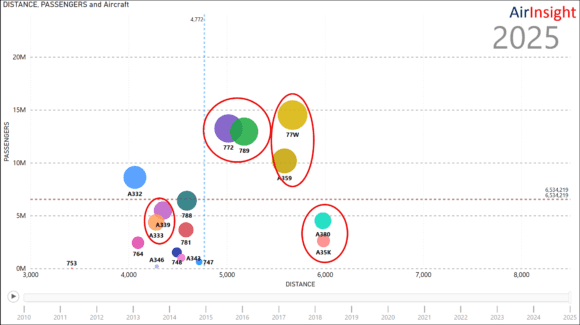
IMG 8996
UPDATE – The FAA requires inspections of ’certain Boeing MAX 9s’ following the Alaska Airlines incident on Friday in which a MAX 9 lost part of a fuselage plug. The airline announced late Friday that it had temporarily grounded most of its MAX 9s following the sudden decompression and loss of a mid-aft exit door a few minutes after take off from Portland on January 5. No one was hurt in the incident, in which the aircraft safely returned to the airport.
Alaska flight AS1282 to Ontario with 171 passengers and six crew had just taken off from Portland at 5.06 pm local time when the left exit door aft of the wing was blown out of the aircraft (see picture shared by @Avgeekjake on X). The door is actually a plug, which means that it was supposed to be secured and not operable for deplaning the aircraft. The door and part of the sidewall were torn off.
The seats in row 26 sustained damage but remained attached to the floor. Seat 26A, next to the plug, was not used at the time of the incident. Oxygen masks were deployed as the aircraft climbed to some 16.000 feet and flew a circuit back to Portland.
In a statement later on Friday evening, Alaska CEO Ben Minicucci said he had taken “the precautionary step of temporarily grounding our fleet of 65 Boeing MAX 9 aircraft. Each aircraft will be returned to service only after completion of full maintenance and safety inspections.” He said inspections should take a few days.
The NTSB launched an investigation into the issue, while Boeing said on X that it had a technical team on standby to support the investigation.
Later on Saturday, the FAA said it requires “immediate inspections of certain Boeing 737 MAX 9 planes operated by US airlines or in US territory.” An Emergency Airworthiness Directive covers 171 MAX 9s in worldwide service.
The EAD excludes aircraft that have been checked recently, which meant that Alaska could resume operations with 18 of these specific aircraft later during the day. It’s the same for United Airlines, which grounded some MAX 9s for inspection while continuing operations with aircraft that had done C checks recently. However, on Saturday, Alaska and United recalled their decision and grounded all aircraft again.
On Saturday, Boeing said: “We agree with and fully support the FAA’s decision to require immediate inspections of 737-9 airplanes with the same configuration as the affected airplane. In addition, a Boeing technical team is supporting the NTSB’s investigation into last night’s event. We will remain in close contact with our regulator and customers.”
Delivered in October
The aircraft with registration N704AL was delivered new to the airline on October 31, two weeks after it made its first flight, and was the fourth MAX 9 delivered to Alaska that month. During Q4, three more joined the airline in November and two in December.
The aircraft had arrived in Portland from New York JFK earlier on Friday afternoon, having been at JFK since early morning after arriving from San Diego. It had been doing two rotations per day in the preceding days. TheAirCurrent reported on Friday that N704AL presented “spurious indications of pressurization issues” twice on Thursday when a warning light came on. The first time, Alaska responded by removing the aircraft from extended-range twin operations (ETOPS).
The checks and incident investigation will have to determine if the door incident is an isolated but still worrying one or if there is more to this.
Views: 46




it looks the modular exit door (not configured) was about 6′ x 4′.
A psi differential of about 2-3 psi exists bw cabin pressure (~8000 ft, 10psi) and atmosphere at alt 16000ft (8 psi). That’s about 7,000lbs of force on this door. I’m looking at any signs of stripping on the 6 bolt loops extending from the left side of the frame and finding NONE!
It’s not a “failure” of parts due to the 7000lb force, it’s a completely design problem. The 6 white bolt loops are still pristinely intact and visible cleanly.
I agree the bolds look intact. But if this is a design or production failure needs to be determined. My first impression is the latter: this design has been used for quite a few years now without any problems.